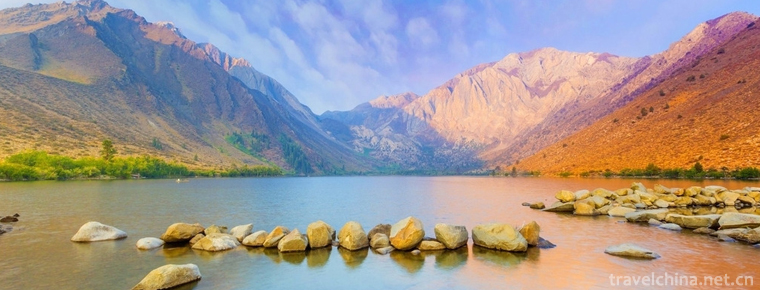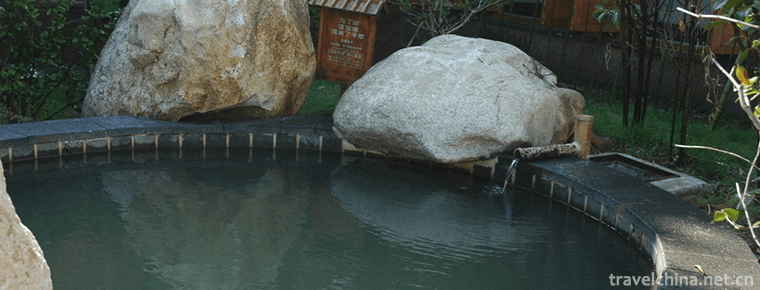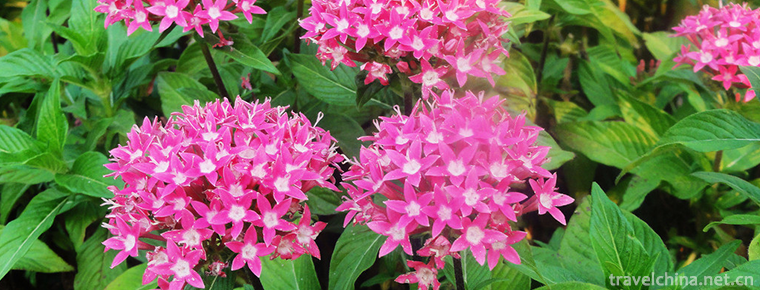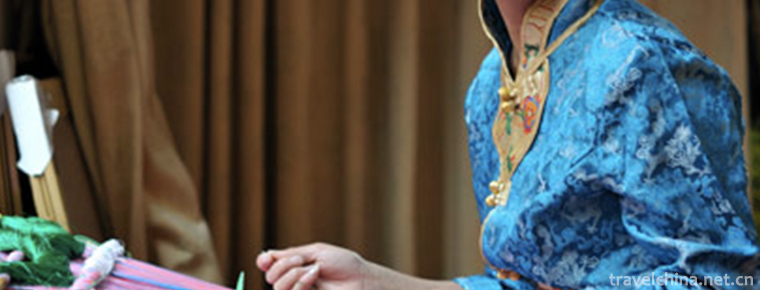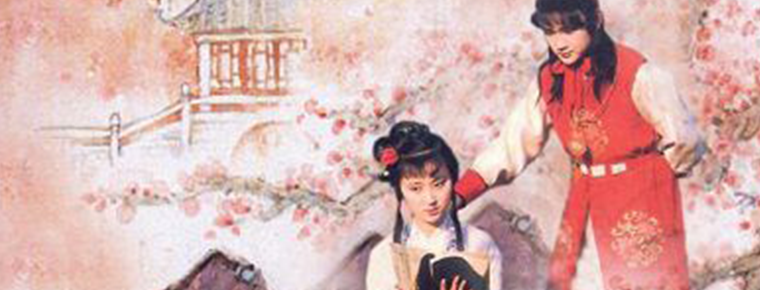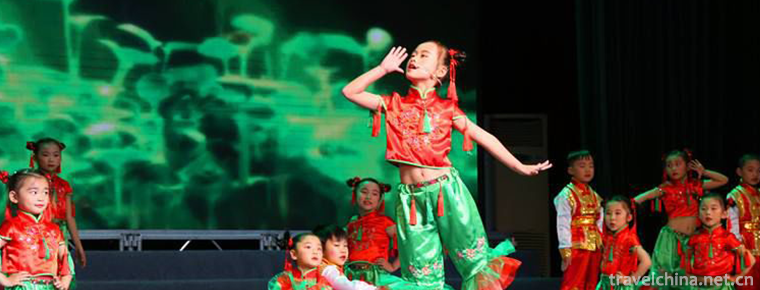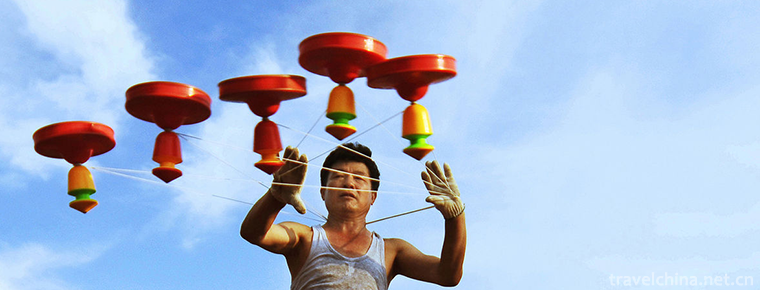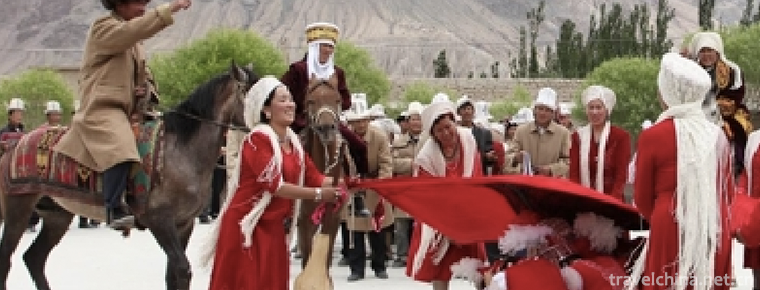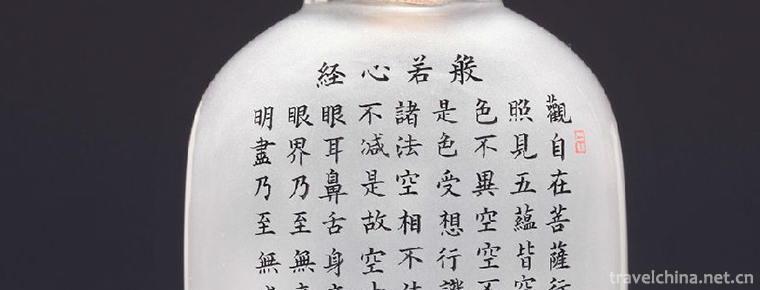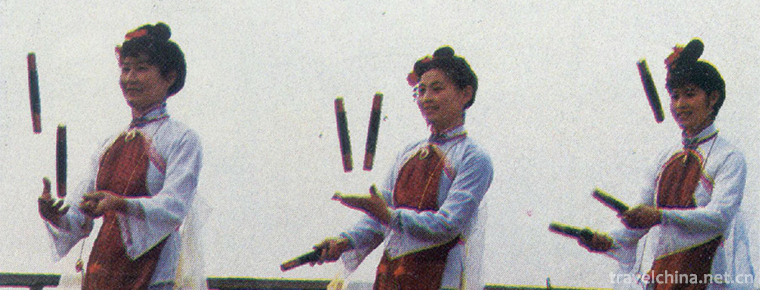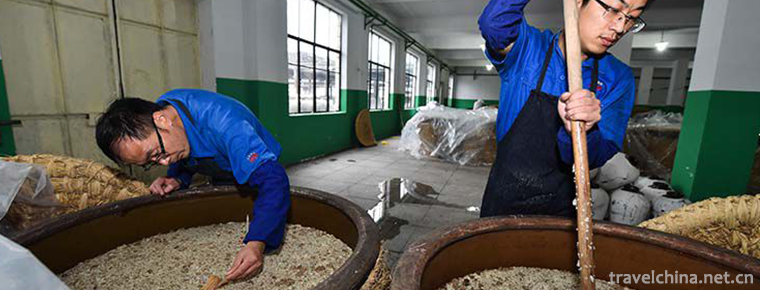Ruoergai grassland
Ruoergai grassland
Ruoergai grassland is like a magnificent emerald inlaid on the border of Northwest Sichuan, known as "oasis of Northwest Sichuan Plateau", and is one of the three wetlands in China.
Its administrative areas include Ruoergai, Hongyuan, ABA and Songpan in Sichuan Province, Maqu and Luqu in Gansu Province, and Jiuzhi County in Qinghai Province, with a total area of 53000 square kilometers and a total population of 261500.
Geography
terrain
Zoige grassland is a special area on the eastern edge of the Qinghai Tibet Plateau. The altitude ranges from 3300 meters to 3600 meters, which is also known as Songpan plateau. Compared with the low altitude areas in the middle and east of China, it is a plateau, while it is in a group relative to Minshan Mountain in the East, Qionglai mountain in the south, Guoluo mountain, Animaqing mountain, Xiqing mountain in the West and West Qinling Mountain in the north Surrounded by mountains, it is a basin on the plateau.
River Hydrology
The main rivers in Zoige are gaqu, Moqu and requ, which flow into the Yellow River from south to north. The mountains in the north and southeast of Qinling Mountains are the residual veins of Dieshan mountains in the west of Qinling Mountains and the northern end of Minshan mountains. The mountains are high and the valleys are deep, and the terrain is steep. The elevation is 2400-4200 meters. The main rivers are Bailong River, baozuo River and Brazil river. Ruoergai grassland has abundant water resources, winding rivers and oxbow lake, forming a unique landscape.
Climatic characteristics
The climate is relatively cold, the annual average temperature is about 0 ℃ - 2 ℃, and the annual precipitation is about 600-700 mm; the maximum monthly average temperature of Hongyuan County in the south is not more than 15 ℃, and the maximum monthly average temperature of Maqu County in the north is only about 10 ℃.
soil
Most of the land in Zoige area is swamp. The soil is soaked in water for a long time, and the temperature is low. Therefore, it is mainly swamp soil with high gleyization degree and slow oxidation of organic matter. A large amount of peat is distributed in some areas.
Ruoergai grassland is located in the great bend of the upper reaches of the Yellow River. It is a relatively fault subsidence low depression in the process of the uplift of the Qinghai Tibet Plateau, surrounded by mountains, so it has become the confluence of some major tributaries of the upper Yellow River, such as Heihe, Baihe and Jiaqu. Due to the cold and humid climate, small evaporation and poor drainage, the surface is often in a state of excessive humidity, which is conducive to the development of swamps. Ruoergai grassland forms the largest peat swamp in China, which accounts for 20% - 30% of the total area, and the average thickness of peat is about 1 m. Therefore, it has become the most important water conservation area and ecological function area in the upper reaches of the Yellow River.
The distribution of Zoige grassland swamp has the following three characteristics: 1. Marshes are not only distributed on flat and broad beaches, Lake Group depressions and terraces, but also in some areas of no flow wide valleys and latent current wide valleys. 2、 Large area. With an area of 300000 hectares, it is the largest peat swamp in China. 3、 The swamp rate is high, generally 20% - 30%. The Heihe River Basin is higher than the Baihe River Basin, and the middle and lower reaches of the two river basins are more than the upper reaches.
There are many types of swamp in Zoige, which are connected with each other in the lake group depression, no flow wide valley, ambush current wide valley and terrace, forming many huge complex swamp bodies. Due to the influence of neotectonic movement and climate change in modern times, the swamp has tended to be naturally drained. Some marshes can be used as pastures after artificial transformation.
Biological resources
There are many kinds of animals and plants in Zoige grassland. There are National Wetland Reserve, black necked Crane reserve and sika deer reserve. It inhabits a large number of migratory birds and wild animals, such as prairie wolf, black necked Crane, white swan, Tibetan mandarin duck, white stork, sika deer and little panda. Tang Kema was praised by the poet Du Fu as "bamboo with two ears, wind as light as four hooves". The curative effect of Tibetan medicine is magical, and "Pearl seventy pills" is well-known all over the world. "Lvfeng" brand yak food has beautiful color and fragrance.
Ruoergai Wetland National Ecological Function Reserve mainly protects Alpine swamp wetland ecosystem and rare species such as black necked Crane.
Development of agriculture and animal husbandry
Ruoergai is flat and broad, and it is the confluence of some major tributaries of the upper reaches of the Yellow River, such as Heihe, Baihe and Jiaqu. With abundant water resources and good light and heat conditions, Ruoergai has formed a grassland with abundant water and grass and suitable for grazing. Ruoergai has 12.12 million mu of natural grassland and 9.78 million mu of usable grassland. It is one of the three grassland pastoral areas in China and one of the best natural pastures in Asia.
Ruoergai grassland mainly feeds yaks, sheep and horses. The eastern part of the grassland is a pure pastoral area. The Tangke horse, which is rich in the local area, belongs to Hequ horse strain and is one of the three famous horses in China. Mowa yak is also a famous excellent breed.
The west of Zoige grassland is a semi agricultural and semi pastoral area, with 80000 mu of cultivated land. It is suitable for planting annual crops, mainly highland barley with short growth period, followed by wheat, legume crops and potato. Restricted by soil and temperature, the yield of crops is not high, with a yield of 100-200kg per mu. Local main economic crops are rape and flax, but also produce a small amount of apple and pepper. The area is rich in timber resources, with a forest area of 101139.5 hectares and a total standing stock of 31.2322 million cubic meters, mainly including fir, spruce and other tree species.
Mineral resources
Ruoergai marsh edge area is rich in musk, Cordyceps, Fritillaria, pilose antler, Saussurea and other precious herbal medicines, is the traditional Chinese export medicine. The proven mineral resources include peat, coal, iron, copper, uranium, manganese and gold. The peat resources developed in the swamp are extremely rich, covering an area of more than 2000 square kilometers and reserves of nearly 4 billion cubic meters.
History and culture
Ruoergai has always been the main traffic route to Gansu to Qinghai, and is an important town on the North Road of Aba Prefecture. It is located in the triangle area that goes to Hehuang Valley in the north, Minjiang River, Dadu River in the South or Jialing River in the east to reach the Sichuan Basin. It has always been the leading edge of communication and integration between the Qinghai Tibet Plateau and the mainland, and is also a place that strategists must contend for.
In the prehistoric period, Zoige was an important place for the birth of the ancient Qiang people, an important source of the Chinese nation. It belonged to Xirong. In the pre Qin period, it was under the jurisdiction of Xirong. It belonged to Tuyuhun in the northern and Southern Dynasties, Jimi in Songzhou in the early Tang Dynasty, and Tubo in the 12th year of Zhenguan. In the Yuan Dynasty, panzhou was set up in Qiuji township. In the Ming Dynasty, it belonged to songpanwei. In the Qing Dynasty, it was under the jurisdiction of zhanglaying of songpanting In the period of the state, it belonged to Songpan county. In June 1953, zoigebao administrative committee, a transitional county-level administrative organization, was established. In July 1956, the county was officially established and was subordinate to Aba Tibetan Autonomous Prefecture. According to legend, during the period of chizudezan (815-838), the 40 generation Tibetan king sent the minister GA yisidaji to invade the border and stay in the current Zoige area. The descendants of Zoige were in charge of money and grain taxes. The people referred to it as "ruogai", which was later named Ruoergai. Later, it developed into Zoige nenwa, zoigedoma and other tribes.
At the same time, Zoige is also an important part of the Amdo cultural region, one of the three major regions of Tibetan culture.
Songpan grassland
The Red Army's long march in Sichuan lasted the longest time, experienced the broadest area, faced the most difficult and dangerous environment, carried out the most outstanding struggle and made the greatest sacrifice. All these are embodied in Zoige grassland, which is called "Songpan Grassland".
According to historical records, more than 10000 Red Army officers and soldiers have been sleeping in Grasslands (mainly distributed in fufangba, baozuo pasture, Banyou grassland in Ruoergai County, and sejiba and longriba in Hongyuan county), and the Red Army was almost on the verge of extinction when entering the grassland.
People often use the glorious words "Zoige is the place where the red army passed through in the long march" to explain the extraordinary relationship between Zoige and the Chinese revolution and its historical position. Its rich and profound meaning is not only that the solemn and stirring Red Army "crossed the grassland" in Zoige, but also that the Brazilian conference made the party and the Red Army get rid of the political dilemma; the baozuo campaign opened the way for the victory of the north Yaks and highland barley on the plateau rescued the Red Army's "three passes of Grassland". Without mature crops in Brazil (today's panzhou area), the Red Army could have died as Chiang Kai Shek claimed. It is precisely because the Zoige area has provided important conditions for the party and the Red Army to overcome the three major crises of politics, military affairs and economy, which inevitably becomes the only starting point for the three main forces of the Red Army on the 25000 Li Long March to regain their vigour and march northward together. Therefore, Zoige grassland has irreplaceable historical significance in the long march
Main attractions
Deer farm, Taiyang lake, Baiwa temple, dageze temple, Jiangzha hot spring, former site of Brazil conference, the first bend of the Yellow River, Tiebu Sika Deer Nature Reserve.
Practical information
Best travel time
Summer is the golden season of grassland, where the sky is clear and the visibility is very high. Between heaven and earth, green grass, flowers like brocade, fragrance secluded, a look boundless. Numerous small lakes are dotted in the grassland. The water is blue. The small rivers are like vines. The lakes are connected together. The water is clear and the fish can be counted. In addition, in the middle of September every year, the red leaves all over the mountains compete with each other from the top to the valley from high to low. Walking in the Green Valley and the beautiful mountains of the corridor, the heart will be filled with a strong intoxicating autumn.
get accommodation
There are tent hotels in the Jiuqu No.1 Bay scenic area of the Yellow River and Wache, with 30-40 yuan / person and electric blanket. Tourists can also choose to stay in Tangke Township, 8 km away from the scenic area, with 15-20 yuan / person. There are two Hotels with better conditions in Ruoergai County: Ruoergai Hotel and lingadou hotel. In addition, the Xiangbala hotel in Zoige county is one of the best foreign-related tourism hotels in Zoige, with a standard room of 288 yuan / person, with authentic Tibetan food and delicious Sichuan cuisine. Hongyuan county is recommended to stay in Hongmao Hotel, Hongyuan Hotel, shijixiangbala Hotel and Xinlong Hotel on the prairie.
Food Specialties
Tibetan restaurants include Zanba, Jiaoma rice, sour milk, milk cake, steamed bun, pickled cabbage noodles, wild vegetables, Tibetan bacon, sausage, pork leg, highland barley wine, etc.
Tourism products
Natural Seabuckthorn drink, wild vegetable series products, red leaf plastic seal label, red leaf series wine. Tibetan handicrafts include Tibetan knife, cigarette box, hot pot, belt, headdress and ornaments.
Travel Tips
The average altitude of Zoige is about 3500 meters, so careful preparations should be made before traveling, including raincoat and cold proof clothes. It is recommended not to take a bath on the first night of arrival to prevent the occurrence of cold and mild high altitude reaction. Oxygen carrying tablets can be used for anti hyperreflexes.

Ruoergai grassland
-
Shika Snow Mountain
Sheka snow mountain scenic area is located in the southwest of Jian Tang town in Shangri-La County
Views: 203 Time 2018-10-19 -
Guan Tang hot spring
Guantang Hot Spring is located in Tangtou Town, Linyi City, Shandong Province, on the East Bank of Yihe River. The hot spring covers an area of nearly 260 Mu and has a construction area of 100,000 squ
Views: 210 Time 2019-01-13 -
Xishuangbanna Tropical Flower Garden
Xishuangbanna Tropical Flower Garden is located in Yunnan Institute of Tropical Crop Sciences, Jinghong City, Xishuangbanna Prefecture, Yunnan Province. It covers an area of 80 hectares and is one of
Views: 159 Time 2019-02-25 -
Tibetan knitting and embroidery
Tibetans are good at embroidery and textile, and exquisite craftsmanship adds infinite charm to their costumes, which is the most prominent manifestation of Tibetan
Views: 156 Time 2019-04-05 -
Legend of Cao Xueqin
The legend of Cao Xueqin refers to the story that the common people in the place where Cao Xueqin lived in his later years respected him and processed his deeds into a story.
Views: 139 Time 2019-04-15 -
Dang Tu folk songs
Dangtu Folk Song is one of the national intangible cultural heritages of the local traditional music in Ma'anshan City, Anhui Province.
Views: 261 Time 2019-04-25 -
Ceramic Firing Techniques of Dengfeng Kiln
Dengfeng kiln ceramics firing technology is a National Intangible Cultural Heritage Representative project. Historical records began in the Tang Dynasty and flourished in the Song Dynasty.
Views: 172 Time 2019-04-26 -
Diabolo
Diabolo is a splendid flower in Chinese traditional culture garden. Diabolo used to be called "Hu Dao", also known as "ground bell", "empty bell", "wind gourd".
Views: 157 Time 2019-04-28 -
Kirgizyolon
The "Yolong Song" of Kirgiz is a kind of folk etiquette song spread in the Kirgiz inhabited area living in Pamir area. As a cross-ethnic, cross-cultural and cross-regional phenomenon of folk
Views: 313 Time 2019-05-09 -
a bottle with painted designs
Internal painting is a unique traditional craft in China. It originated from snuff bottle painting. The interior painting method is a special deformed fine brush, in glass/crystal, amber and other mat
Views: 150 Time 2019-06-07 -
Three stick drum
Sanwanggu is a kind of folk singing form widely spread in Youyang of Chongqing, Yongshun County of Longshan County in Western Hunan, Zhangjiajie and Wuyang, Tianmen and Enshi Prefecture in southwester
Views: 327 Time 2019-06-12 -
Brewing Techniques of Shaoxing Yellow Rice Wine
Shaoxing has a long history of brewing wine, which can be traced back to the Spring and Autumn Period and the Warring States Period. By the time of the Northern and Southern Dynasties, it was well-kno
Views: 184 Time 2019-06-14
